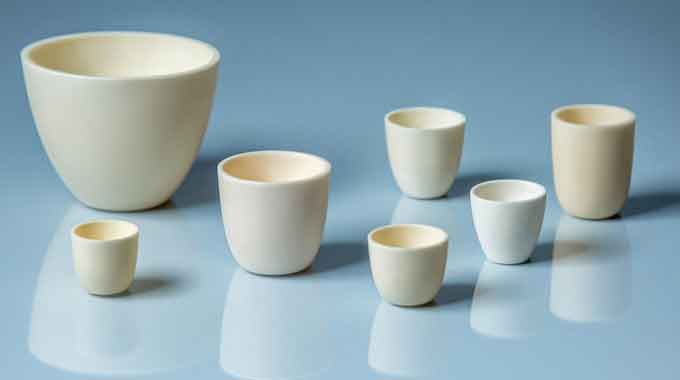Alumina is a versatile material. It can be extruded, slip cast, and die-pressed. It is difficult to machine, but diamond grinding methods are a good option. Advanced machining methods are also available, and Precision Ceramics has created a green machining technique.
Titania
Titania is the second most common form of alumina ceramic, after bauxite. It is an industrial oxide ceramic with high hardness and wear resistance. It is produced from bauxite and shaped by slip casting, die pressing, and injection molding. It is wear and corrosion-resistant, bioinert, and high-temperature resistant.
Titania is a dark gray material, which is about 90% pure titania. It is generally fired with an additive to neutralize the electric charge, and is useful for applications where static electricity may be a problem. Titania is used for eyelets, which is why it is so commonly used in the textile industry.
Titania also has high bioactivity. It can increase wettability, which makes it useful for biomedical applications. In addition, it can change cell viability. According to a study by Zhang et al., cells grown on Titania-coated ceramics exhibited greater cell viability than those in titanium dioxide-coated ceramics.
AW (alumina white)
AW (alumina white) ceramics are manufactured using a chemical process called calcining. The process involves suspending alumina particles above a stream of hot air and calcining them. The resulting powder is then mixed with other materials before being used in the ceramic-forming process. The grade of the finished ceramic depends on the blend of alumina and the other substances, Browse around this site.
The properties of AW (alumina white) ceramics are primarily determined by the properties of the main constituent, aluminum. For example, the crystalline structure of alumina is based on two-thirds oxygen atoms and two-thirds aluminum atoms. These properties make AW ceramics attractive for a variety of technological applications.
Alumina materials vary in composition from nearly pure aluminum oxide to materials containing trace elements or associated impurities. They can also contain glass. Although their mechanical properties are poor, AW ceramics have excellent high-temperature resistance, allowing them to be used above 500oC in an air atmosphere. Their high-temperature resistance makes them an excellent choice for a number of metallurgical applications.
TC (titania conductive)
The TC (titania conductive) type of ceramics is a dark-gray, titanium dioxide-based ceramic. These ceramics have an additive that makes them electrically conductive, making them ideal for use in applications where static buildup is a problem.
Titania conductive ceramics have a low Seebeck coefficient and are highly conductive. They have excellent electrical conductivity and excellent thermal conductivity. They can be used for a wide range of applications, including electroplating. They can also be used for high-frequency applications.
Conclusion:
TC (titania conductive) materials are widely used in fuel cells and batteries. Fuel cells convert chemical energy into electricity. Fuel cells are made up of two metal oxide elements in an electrolyte. As the electrolyte flows, ions flow through it. Electrons then flow through a suitable conductor from the anode to the cathode. Today, batteries are widely used in portable appliances, motor vehicles, toys, and other products.

